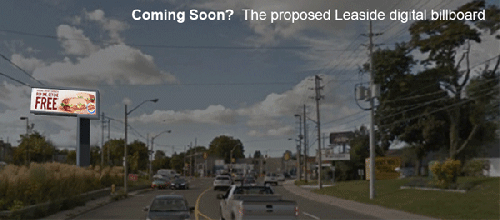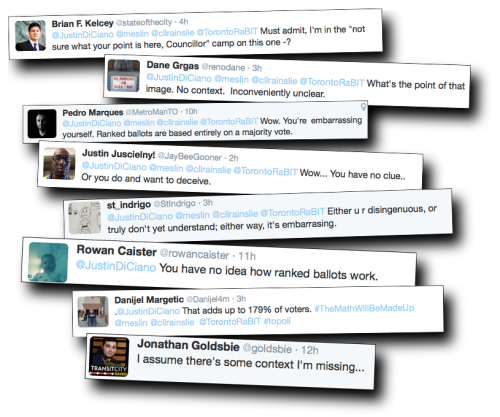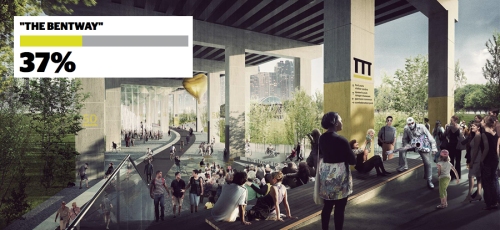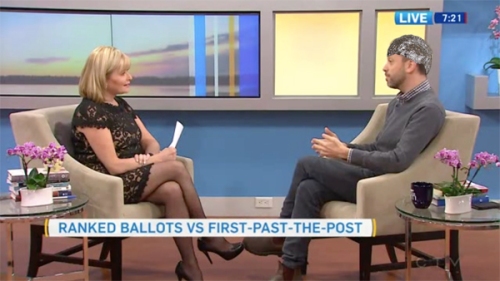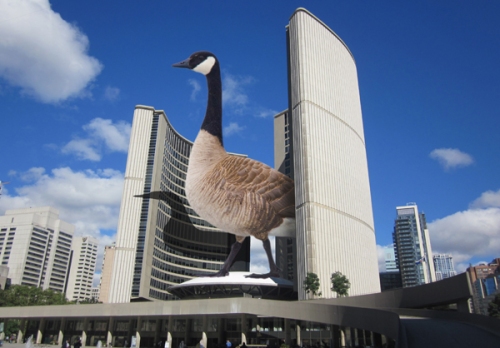
[cross-posted on Huffington Post, …without my gorgeous goose]
Municipal elections in Ontario are about to get more fair and friendly. The provincial government is introducing legislation that will allow any municipality (there are 444 of them!) to use ranked ballots and runoff voting.
Ranked ballots give more power to voters by eliminating strategic voting, encouraging positive campaigns and ensuring that unpopular incumbents can’t win their seats due to vote-splitting. In Toronto, for example, an incumbent councillor “won” his seat in 2014 even though 75 per cent of his constituents voted against him. Another councillor “won” with only 17 per cent of the vote! Runoff voting puts an end to these kinds of distorted results.
But as Ontario moves closer to becoming the first province to allow ranked ballot voting, critics of reform are speaking out.
Some of the most amusing criticisms are coming from city councillors and municipal clerks. From Toronto and Minto, to Cambridge and Niagara Falls, we’re hearing local officials suggest that ranked ballots are confusing, complex, frivolous and unfair.
These accusations are not only untrue, but they reveal a comedic double-standard. After all, not only is runoff voting already being used by all of Canada’s political parties, but it is also being used by an interesting group of politicians: Ontario city councillors!
That’s right. Some of the same people who are trying to derail democratic reform in Ontario themselves use the exact same system that they claim is too complex or unfair.
Let me explain. Every four years, we elect our city councillors using the first-past-the-post system. It’s a simple method: whoever gets the most votes wins. Councillors do not need to get 50 per cent of the vote to win, or pass any threshold at all. They just need “the most votes.”
But what happens if a city councillor has to resign their seat, mid-term? This can happen due to illness, death, or perhaps simply because they want to run in a provincial or federal election.
This creates a vacancy on council, which can be filled in one of three ways:
- A by-election can he held. This is a common method, especially if the vacancy becomes available early in the term.
- The runner-up from the prior election is appointed. In other words, whoever came in second place becomes the councillor.
- City council appoints an interim councillor. Anyone from the public can apply for the position, they each give a short speech to city council, and then councillors vote to choose their favorite.
Option number three is used commonly in Toronto and in other cities across Ontario. For example, in 2014, two seats became available in Toronto: Adam Vaughan’s and Peter Milczyn’s. Nineteen citizens applied for Milczyn’s seat and 26 signed up for Vaughan’s. As I watched the process unfold, I was surprised to see that city councillors were using a runoff voting system! The winner had to earn 50 per cent of the vote. If no one got 50 per cent on the first count, then they would eliminate the candidate with the least votes and councillors would vote again.
It was amusing to watch councillors, half of whom didn’t earn 50 per cent in their own election (including one who only earned 19 per cent!) use a system that forces winners to earn a majority of the vote.
I was curious about this double standard, so I took a look at Toronto’s Procedural Bylaw to see what the rules were.
TORONTO MUNICIPAL CODE COUNCIL PROCEDURES
Balloting Procedures
If the nominee with the most votes does not receive the votes of a majority of the members present, Council conducts another ballot. The next ballot excludes the nominees with the fewest votes and any nominee with no votes. Balloting continues untilil one nominee receives both the most votes and a majority of votes.
(Full text here. Appendix A)
Fascinating! So, when we elect our councillors, they’re allowed to “win” with 19 per cent of the vote. But when they are choosing a colleague, they use a runoff system to ensure majority support!
I was also curious to find out how other cities in Ontario choose their interim councillors.
I found this procedure in Hamilton:
CITY OF HAMILTON, CITY MANAGER’S OFFICE
APPOINTMENT PROCEDURE FOR FILLING VACANCY ON COUNCIL
After hearing all of the applicants,Council appoints an applicant to fill the office of Councillor by way of a run-off ballot.
(Full text here.)
And I found this one from Whitby:
Procedure to Appoint an Eligible Voter to fill the Town Councillor North Ward 1 Vacancy
Rounds of voting shall continue until a Nominee has received more than one half (1/2) of the votes of the Members of Council present.
Where a round of voting does not result in a Nominee receiving more than one-half (1/2) of the votes of the Members of Council present… The Nominees with the fewest number of votes will be automatically excluded from the Slate of Nominees in the next round of voting.
(Full text here.)
Despite hours of research, I was not able to find a city anywhere in Ontario that uses first-past-the-post as their official procedure to fill an interim seat.
So, the next time you hear a city councillor, mayor, or municipal clerk suggest that runoff voting is obscure, complicated, or unfair, ask them what system they’re using.
If it’s good enough for them, why isn’t it good enough for us? And if it’s fair for them, how could it be unfair for us? And if it’s not too complex for them, why do they think it’s too complex for us?
Runoff voting makes our elections more fair and friendly. And despite what some critics might tell you, it’s already being used all over the place. In fact, it’s being used by the critics themselves.




